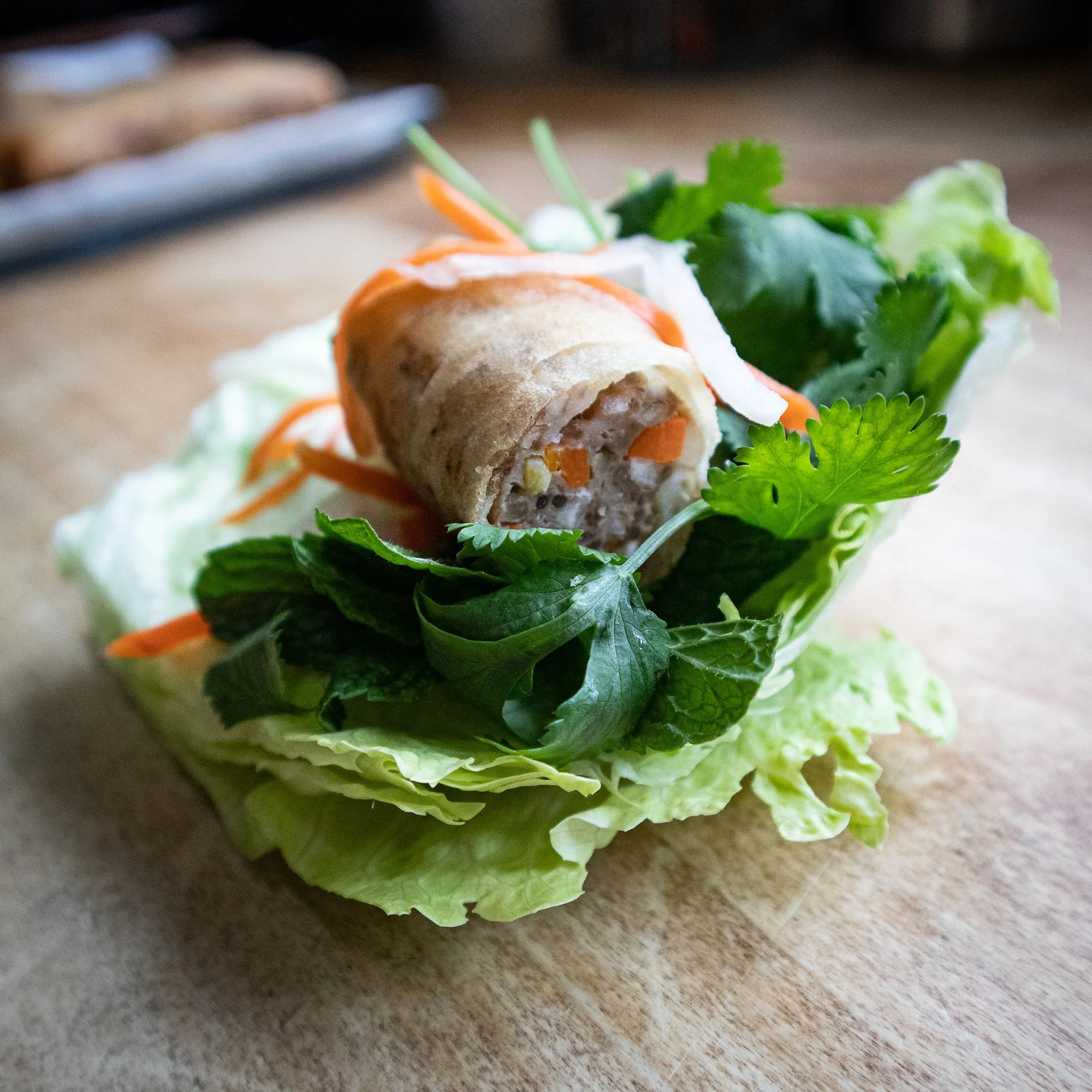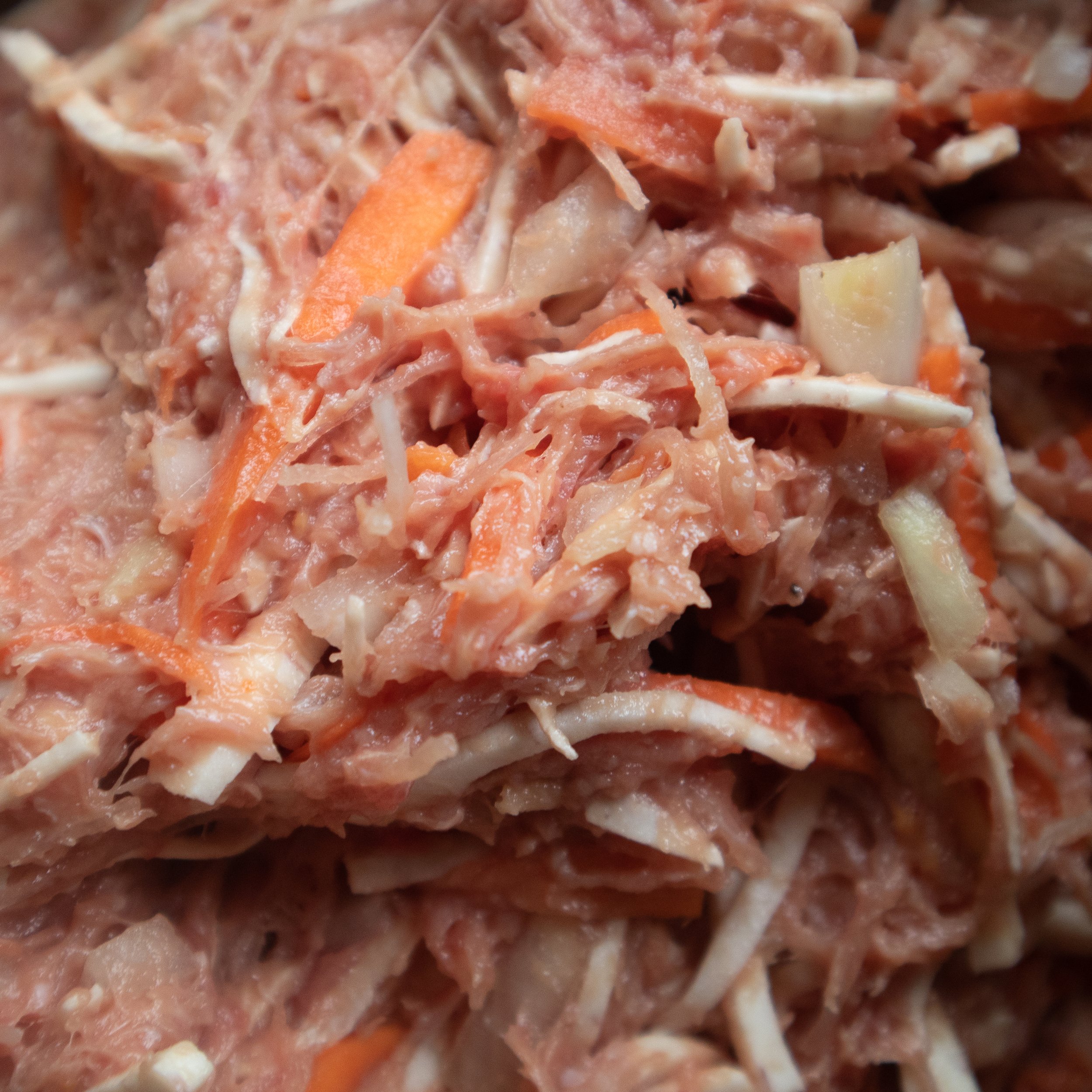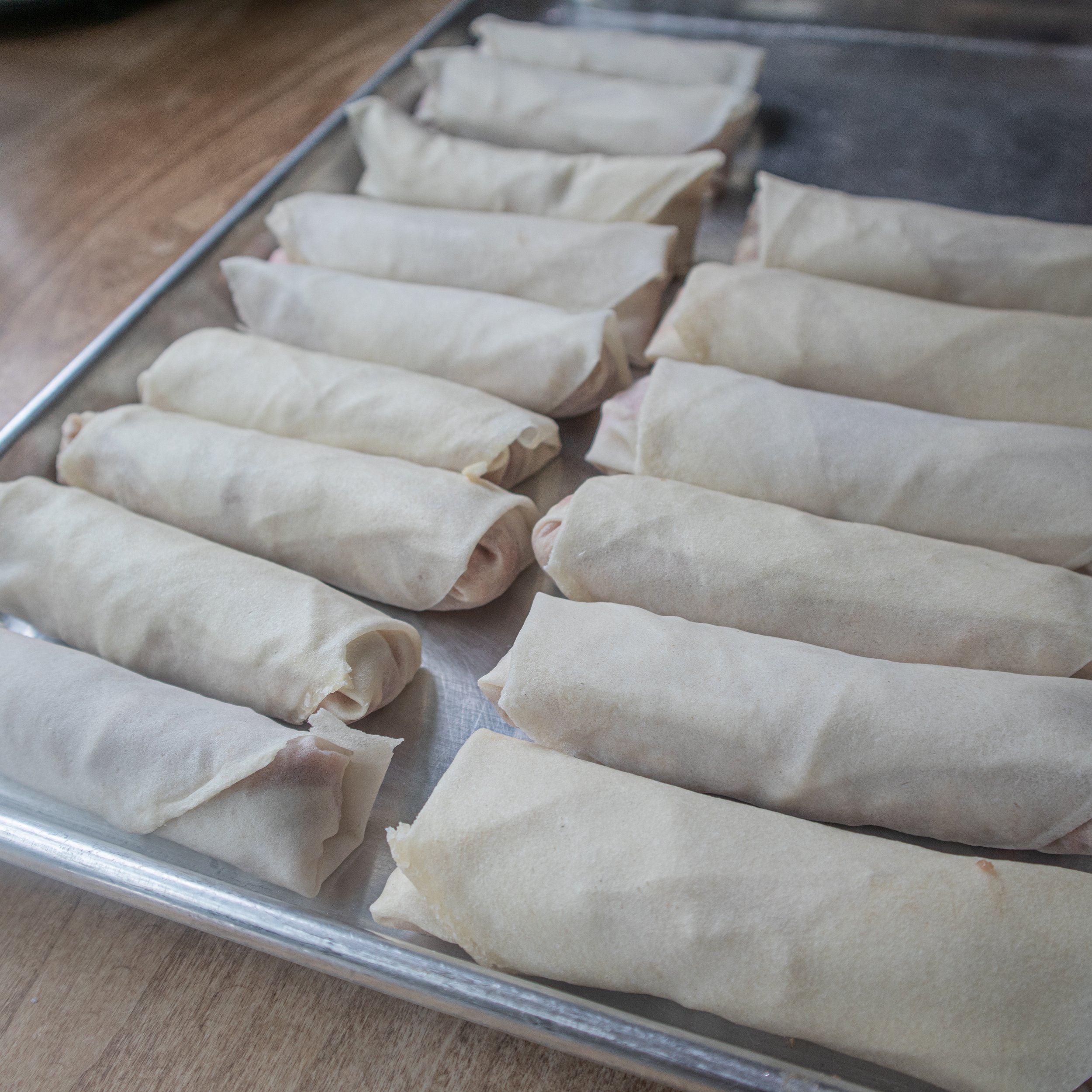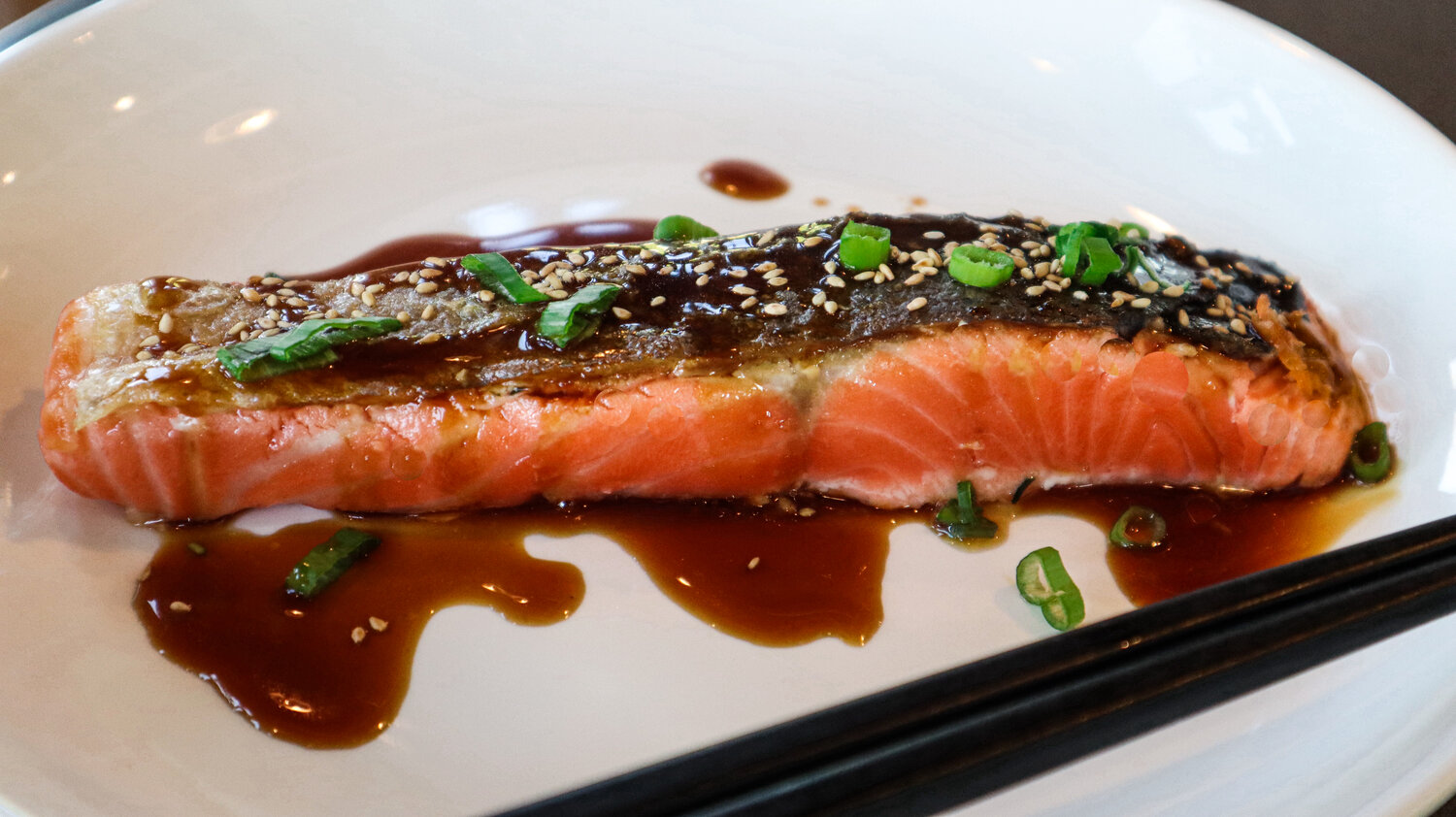
Chả Giò Khoai Môn (Vietnamese Taro Fried Spring Roll)
Ingredients
Instructions
- Add the Ground Pork to a large bowl.
- Then add Oyster sauce, Fish Sauce, Sesame oil, Sugar, Kosher, Black Pepper, Ginger, Garlic, Mung Bean Noodles, Carrot, and Taro
- Mix all the ingredients for 5-10 minutes, until the mixture is fully incorporated.
- Cover the mixture with plastic wrap, and hold it in the refrigerator when not in use.
- Setup your Spring Roll station with a small bowl of cold water.
- Lay the Spring Roll Wrapper flat with one corner pointing away from you, so it looks like a diamond shape.
- Scoop 2-3 tbsp. of filling and 30% in from the bottom corner of the wrapper.
- Fold 1” of the (left and right) sides of the Spring Roll.
- Roll the bottom Spring Roll wrapper upward while tucking.
- Stop when there is 2-3” of Spring Roll wrapper left to roll.
- Wet your index with water and run your wet finger along the flat edges of the Spring Roll wrapper.
- Finish rolling and tucking the Spring Roll.
- Press firmly to seal the Spring Roll.
- Set the Spring Roll aside on a baking sheet.
- Repeat.
- In a medium-sized pot, add 2-3 cups of oil.
- If the oil level surpasses the halfway mark of the pot, grab a bigger pot.
- Preheat your frying oil to 325 degrees F.
- Gently lay a Spring Roll into the pot of hot oil. Add them one at a time.
- Fry each Spring Roll for 5 minutes on each side. Or until golden brown on all sides
- Place the Spring Rolls on a baking tray lined with paper towels to absorb residual grease.
- Garnish with lettuce and Vietnamese herbs
- Dip with Nuoc Cham
Notes
Egg Roll vs. Spring Roll
========
Chả Giò - Is it called an “Egg Roll” or a “Spring Roll”?
========
The two terms are often conflated. But their origins (and meaning) are very different. Spring Rolls originated from China. Traditionally, they were made during the Lunar New Year which is during the Chinese Spring season; hence the term “Spring Roll.” Furthermore, Spring Rolls are wrapped with a crisp, paper-thin wrapper. How does it differentiate from Egg Rolls? Egg Rolls are a result American-Chinese diaspora. [I.E., chop suey, sweet and sour pork, char siu, etc.] It’s a Spring Roll with the addition of egg into the (batter of dough) crisp, paper-thin wrapper.






























![Salmon Confit with Ginger Scallion [Cá Hồi Om Dầu Olive] Salmon Confit with Ginger Scallion [Cá Hồi Om Dầu Olive]](https://i.imgur.com/1l2MYqr.jpg)





